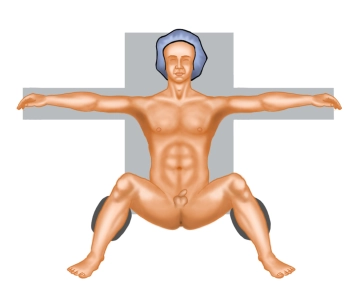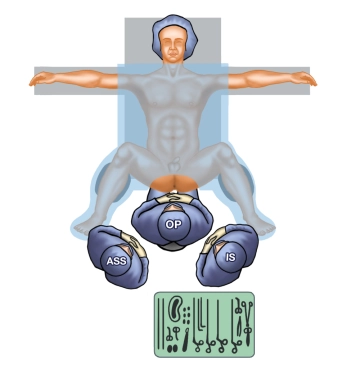- Symptomatic hemorrhoids III and IV
- Hemorrhoids II not treatable conservatively
Non-symptomatic hemorrhoids primarily do not require surgery.
Start your free 3-day trial — no credit card required, full access included
Non-symptomatic hemorrhoids primarily do not require surgery.
An absolute contraindication is only present in the case of general inoperability of the patient.
The following list represents a compilation of relative contraindications:
Proctological Examination: Inspection, Palpation, Proctoscopy, Rectoscopy
General Risks:
Specific Risks:
Depending on the general condition of the patient:
With corresponding exposure of the anal area:
The surgeon sits in front of the patient positioned in lithotomy position, with the first assistant to the left. The scrub nurse stands laterally to the right behind the surgeon.
Postoperative analgesia: Non-steroidal anti-inflammatory drugs are generally sufficient. Follow the link to PROSPECT (Procedures Specific Postoperative Pain Management). Follow the link to the current guideline Treatment of acute perioperative and post-traumatic pain.
Medical aftercare: Insertion of an ointment strip at the end of the operation, which is removed on the first postoperative day. If the patient experiences severe pain, especially during defecation, Xylocaine gel may be applied. It is particularly important to rinse or use chamomile sitz baths after bowel movements to keep the wound area reasonably clean. Thrombosis prophylaxis: In the absence of contraindications, due to the moderate thromboembolic risk (surgical procedure > 30 minutes duration), low molecular weight heparin should be administered prophylactically, possibly in a weight- or disposition risk-adapted dosage until full mobilization is achieved. Considerations: renal function, HIT II (history, platelet monitoring). Follow the link to the current guideline Prophylaxis of venous thromboembolism (VTE). Mobilization: Immediate Physical therapy: Not necessary Dietary progression: Immediate Bowel regulation: Keep stool soft-formed to avoid unnecessary straining and aim for a once-daily defecation. Best achieved through regular intake of sufficient fiber. Alternatively, lactulose can be administered, though with the risk of excessive effect and resulting mushy diarrhea with corresponding negative impacts. Work incapacity: For sedentary work or heavy physical exertion: two weeks, possibly even three weeks. Otherwise, 1-2 weeks.

